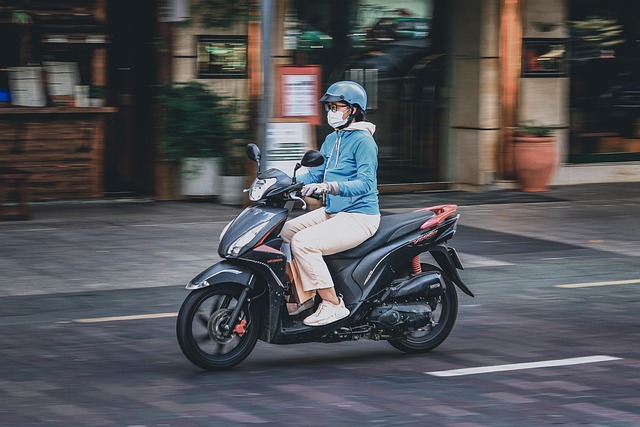A Guide to Electric Scooters: Choosing Your Ride, Understanding the Rules, and Joining the Urban Mobility Revolution
Electric scooters have transformed urban transportation, offering a nimble, eco-friendly alternative to cars and public transit. These compact vehicles have surged in popularity worldwide, appearing in city centers, university campuses, and suburban neighborhoods alike. As cities grapple with congestion and pollution, e-scooters represent a promising solution for short-distance travel that's both efficient and enjoyable. This guide explores everything you need to know about joining the electric scooter revolution—from understanding what makes them unique to selecting the perfect model for your needs.

What Makes Electric Scooters Unique Compared to Other Personal Transport?
Electric scooters occupy a distinctive niche in the personal transportation ecosystem. Unlike bicycles, they require minimal physical exertion, making them accessible to people of varying fitness levels. Compared to electric bikes, they’re more compact, lighter, and typically more affordable. E-scooters also differ from traditional kick scooters through their motorized assistance, eliminating the need for continuous pushing.
The unique standing position on an e-scooter offers greater visibility in traffic compared to seated options like e-bikes. Most models feature intuitive controls—typically a throttle and brake system that can be mastered within minutes. Their foldable design sets them apart from nearly all other transportation methods, allowing riders to easily carry them onto public transit or store them under a desk at work, creating a truly flexible mobility solution for urban environments.
Why Is the Popularity of E-Scooters Surging Worldwide?
Several factors have contributed to the remarkable rise of electric scooters globally. Environmental awareness ranks high among these reasons, with consumers increasingly seeking transportation options with minimal carbon footprints. E-scooters produce zero direct emissions and consume far less energy than cars, making them an attractive option for eco-conscious commuters.
Economic considerations have further fueled adoption. As urban living costs rise, the affordability of e-scooters—both in initial purchase and ongoing maintenance—presents a compelling alternative to car ownership or even public transportation passes in many cities. The COVID-19 pandemic also accelerated adoption, as people sought personal transportation options that allowed for social distancing while avoiding enclosed spaces.
Additionally, many cities have embraced e-scooters as part of their smart mobility initiatives. Shared scooter programs have introduced millions to this mode of transport, creating a gateway experience that often leads to personal ownership. The technology has also matured rapidly, with today’s models offering better battery life, enhanced safety features, and improved durability compared to early versions.
How Can You Find the Right Electric Scooter for You?
Finding your ideal electric scooter begins with honest assessment of your transportation needs. Consider your typical journey distance—most entry-level scooters offer ranges between 10-20 miles, while premium models can exceed 40 miles on a single charge. Your commute terrain matters significantly; modest inclines require more powerful motors, typically 350W at minimum, while steep hills may demand 500W or more.
Weight capacity is another crucial consideration, as exceeding the recommended limit affects performance and safety. Most standard models accommodate riders up to 220 pounds, though heavy-duty options exist for those requiring higher capacities. Weather resistance varies considerably between models—some basic scooters aren’t designed for wet conditions, while others feature proper IP ratings for water resistance.
Your storage situation should influence your choice as well. Measure available space at home and work, and check the folded dimensions of prospective models. Finally, consider local regulations, as some jurisdictions have specific power or speed limitations for e-scooters used on public roads and paths.
What Tips Can Help in Choosing the Perfect E-Scooter?
When shopping for an e-scooter, prioritize safety features like reliable braking systems. The best scooters offer redundant braking—combining electronic, disc, and/or drum brakes—ensuring stopping power even if one system fails. Lighting is equally important; look for integrated front and rear lights, plus side reflectors for visibility.
Test ride whenever possible. The handling characteristics, acceleration response, and general comfort vary significantly between models and are difficult to assess from specifications alone. Pay attention to tire type as well; air-filled tires provide better shock absorption and traction but require maintenance, while solid tires are maintenance-free but deliver a harsher ride.
Consider the warranty and after-sales support. Established brands typically offer at least one year of coverage and maintain spare parts inventory for repairs. Research battery replacement costs, as this will eventually become necessary and can represent a significant expense. Finally, resist the temptation of unknown ultra-budget brands, as safety compromises and poor reliability often outweigh the initial savings.
How Do Costs and Features Compare Among Different E-Scooter Tiers?
The e-scooter market spans from budget models to premium offerings, with distinct feature sets at each price point. Understanding these differences helps ensure your investment aligns with your needs and expectations.
| Price Tier | Typical Cost | Key Features | Best For |
|---|---|---|---|
| Budget | $300-$500 | 250-350W motors, 10-15 mile range, basic lighting, 15-18 mph top speed | Occasional riders, flat terrain, short commutes |
| Mid-range | $600-$900 | 350-500W motors, 20-25 mile range, dual braking, suspension, 18-22 mph top speed | Regular commuters, mixed terrain, medium distances |
| Premium | $1,000-$1,800 | 500-1000W motors, 30-40+ mile range, advanced suspension, premium brakes, 25-30+ mph top speed | Daily riders, challenging terrain, longer commutes |
| Ultra-Premium | $1,800+ | 1000W+ dual motors, 40-70+ mile range, hydraulic brakes, advanced suspension, 30-45+ mph top speed | Enthusiasts, all terrains, maximum performance needs |
Prices, rates, or cost estimates mentioned in this article are based on the latest available information but may change over time. Independent research is advised before making financial decisions.
Entry-level models typically sacrifice range and power for affordability, making them suitable for occasional recreational use but potentially frustrating for daily commuting. Mid-range options strike a balance between performance and price, offering sufficient capabilities for most urban commuters. Premium scooters deliver superior ride quality, range, and durability—investments that make sense for daily riders who depend on their scooters for transportation.
Beyond the purchase price, consider operational costs. Entry-level scooters often have limited part availability and shorter lifespans, potentially costing more over time despite lower initial prices. Premium models typically feature user-replaceable components and more durable construction, reducing long-term ownership costs despite higher upfront investment.
Joining the Urban Mobility Revolution Responsibly
As electric scooters continue redefining urban transportation, responsible ownership becomes increasingly important. Familiarize yourself with local regulations regarding helmet requirements, speed limits, and permitted riding areas. Many cities have specific rules about whether e-scooters belong on sidewalks, bike lanes, or roads.
Proper maintenance ensures both safety and longevity. Regular checks of brakes, tires, folding mechanisms, and electronic components help prevent accidents and costly repairs. Consider taking a safety course if you’re new to personal electric vehicles, as the riding dynamics differ significantly from bicycles or other familiar transportation modes.
The electric scooter revolution represents more than just a transportation trend—it’s part of a broader shift toward more sustainable, efficient urban mobility. By making an informed choice about which model best suits your needs and using it responsibly, you’ll not only enhance your personal mobility but also contribute to more livable urban environments with reduced congestion and emissions.




